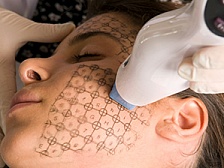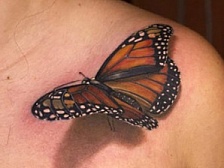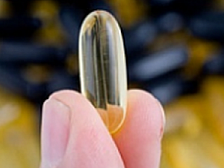The Absolutely 12 Worst Cancer Causing Products In Your Home
http://www.fhfn.org/the-absolutely-12-worst-cancer-causing-products-in-your-home/
You rely on labels to ensure you know whether the product is safe. However, often labels are misleading and you may use a product that is not safe for you. You may also not know what the ingredients mean that you read on those labels. Often manufacturers do not list ingredients on labels. Below you will find a list of ingredients in 12 different products that can cause cancer:
Talcum Powder- (Johnson & Johnson. Inc.)
Labeled Toxic Ingredient:
TALC, Carcinogenic and a risk factor for ovarian cancer; lung irritant.
Cover Girl Replenishing Natural Finish Make Up (Foundation) (Procter & Gamble. Inc.)
Labeled Toxic Ingredients:
BHA, Carcinogenic.
TALC, Carcinogenic; Lung Irritant.
TRIETHANOLAMINE (TEA), Interacts with nitrites to form carcinogenic nitrosamines.
LANOLIN, Often contaminated with DDT and other carcinogenic pesticides.
PARABENS, Contact dermatitis.
FRAGRANCE, Wide range of unlabeled, untested, and toxic ingredients; contact dermatitis.
TALC, Carcinogenic; Lung Irritant.
TRIETHANOLAMINE (TEA), Interacts with nitrites to form carcinogenic nitrosamines.
LANOLIN, Often contaminated with DDT and other carcinogenic pesticides.
PARABENS, Contact dermatitis.
FRAGRANCE, Wide range of unlabeled, untested, and toxic ingredients; contact dermatitis.
Crest Tartar Control Toothpaste – (Procter & Gamble. Inc.)
 Labeled Toxic Ingredients: FD&C BLUE #1, Carcinogenic. SACCHARIN, Carcinogenic. FLUORIDE, Possibly carcinogenic. Alberto VO5 Conditioner (Essence of Neutral Henna)
Labeled Toxic Ingredients: FD&C BLUE #1, Carcinogenic. SACCHARIN, Carcinogenic. FLUORIDE, Possibly carcinogenic. Alberto VO5 Conditioner (Essence of Neutral Henna) Labeled Toxic Ingredients: FORMALDEHYDE, Carcinogenic; neurotoxic; contact dermatitis and sensitizer. POLYSORBATE 80, Generally contaminated with the carcinogen 1,4-dioxane. FD&C RED #4, Carcinogenic. FRAGRANCE, Wide range of undisclosed ingredients; contact dermatitis. Clairol Nice ‘n Easy (Permanent Haircolor) (Clairol. Inc.)
Labeled Toxic Ingredients: FORMALDEHYDE, Carcinogenic; neurotoxic; contact dermatitis and sensitizer. POLYSORBATE 80, Generally contaminated with the carcinogen 1,4-dioxane. FD&C RED #4, Carcinogenic. FRAGRANCE, Wide range of undisclosed ingredients; contact dermatitis. Clairol Nice ‘n Easy (Permanent Haircolor) (Clairol. Inc.)  Labeled Toxic Ingredients: QUATERNlUM-15, Formaldehyde-releaser; carcinogenic; neurotoxic; contact dermatitis and sensitizer. DIETHANOLAMINE (DEA), Carcinogenic; also interacts with nitrites to form a carcinogenic nitrosamine. PHENYLENE-DIAMINES, Includes carcinogens and other ingredients inadequately tested for carcinogenicity; contact dermatitis. PROPYLENE GLYCOL, Contact dermatitis. FRAGRANCE, Wide range of undisclosed ingredients; contact dermatitis. NOTE: Also evidence of causal relation to non-Hodgkin’s lymphoma, multiple myeloma and other cancers. Household Products Ajax Cleanser (Colgate-Palmolive. Inc.)
Labeled Toxic Ingredients: QUATERNlUM-15, Formaldehyde-releaser; carcinogenic; neurotoxic; contact dermatitis and sensitizer. DIETHANOLAMINE (DEA), Carcinogenic; also interacts with nitrites to form a carcinogenic nitrosamine. PHENYLENE-DIAMINES, Includes carcinogens and other ingredients inadequately tested for carcinogenicity; contact dermatitis. PROPYLENE GLYCOL, Contact dermatitis. FRAGRANCE, Wide range of undisclosed ingredients; contact dermatitis. NOTE: Also evidence of causal relation to non-Hodgkin’s lymphoma, multiple myeloma and other cancers. Household Products Ajax Cleanser (Colgate-Palmolive. Inc.)  Unlabeled Toxic Ingredients: CRYSTALLINE SILICA, Carcinogenic; eye, skin and lung irritant. NOTE: Carcinogenicity of silica is admitted in 1994 Material Safety and Data Sheet (MSDS). (Manufacturer claims to have reduced silica levels since 1993.) ZudHeavy Duty Cleanser (Reckitt & Colman. Inc.)
Unlabeled Toxic Ingredients: CRYSTALLINE SILICA, Carcinogenic; eye, skin and lung irritant. NOTE: Carcinogenicity of silica is admitted in 1994 Material Safety and Data Sheet (MSDS). (Manufacturer claims to have reduced silica levels since 1993.) ZudHeavy Duty Cleanser (Reckitt & Colman. Inc.) Unlabeled Toxic Ingredient: CRYSTALLINE SILICA, Carcinogenic; eye, skin and lung irritant. (Carcinogenicity is denied in Material Safety and Data Sheet.) Lysol Disinfectant Spray (Reckitt & Colman. Inc.)
Unlabeled Toxic Ingredient: CRYSTALLINE SILICA, Carcinogenic; eye, skin and lung irritant. (Carcinogenicity is denied in Material Safety and Data Sheet.) Lysol Disinfectant Spray (Reckitt & Colman. Inc.) Labeled or Unlabeled Toxic Ingredient: ORTHOPHENYLPHENOL (OPP): Carcinogenic; irritant. (Carcinogenicity is denied in Material Safety and Data Sheet.) Zodiac Cat & Dog Flea Collar (Sandoz Agro. Inc).
Labeled or Unlabeled Toxic Ingredient: ORTHOPHENYLPHENOL (OPP): Carcinogenic; irritant. (Carcinogenicity is denied in Material Safety and Data Sheet.) Zodiac Cat & Dog Flea Collar (Sandoz Agro. Inc). Labeled Toxic Ingredient PROPOXUR, Carcinogenic; neurotoxic. Ortho Weed-B-Gon Lawn Weed Killer (Monsanto Co.)
Labeled Toxic Ingredient PROPOXUR, Carcinogenic; neurotoxic. Ortho Weed-B-Gon Lawn Weed Killer (Monsanto Co.) Labeled Toxic Ingredient SODIUM 2,4-DICHLOROPHENOXYACETATE (2,4-D), Carcinogenic with evidence of casual relation to lymphoma, soft tissue sarcoma and other cancers ; neurotoxic; reproductive toxin. Food Beef Frankfurters – (eg. Oscar Mayer Foods Corporation)
Labeled Toxic Ingredient SODIUM 2,4-DICHLOROPHENOXYACETATE (2,4-D), Carcinogenic with evidence of casual relation to lymphoma, soft tissue sarcoma and other cancers ; neurotoxic; reproductive toxin. Food Beef Frankfurters – (eg. Oscar Mayer Foods Corporation) Unlabeled Toxic Ingredients BENZENE HEXACHLORIDE, Carcinogenic. DACTHAL, Carcinogenic (can be contaminated with dioxin); irritant; strong sensitizer. DIELDRIN, Carcinogenic; xenoestrogen. DDT, Carcinogenic; xenoestrogen. HEPTACHLOR, Carcinogenic; neurotoxic; reproductive toxin; xenoestrogen. HEXACHLOROBENZENE, Carcinogenic; neurotoxic; teratogenic. LINDANE, Carcinogenic; neurotoxic; damage to blood forming cells. HORMONES: Carcinogenic and feminizing. ANTIBIOTICS: Some are carcinogenic, cause allergies and drug resistance. Labeled Ingredient NITRITE, Interacts with meat amines to form carcinogenic nitrosamines which are a major risk factor for childhood cancers. Whole Milk – (eg. Borden or Lucerne)
Unlabeled Toxic Ingredients BENZENE HEXACHLORIDE, Carcinogenic. DACTHAL, Carcinogenic (can be contaminated with dioxin); irritant; strong sensitizer. DIELDRIN, Carcinogenic; xenoestrogen. DDT, Carcinogenic; xenoestrogen. HEPTACHLOR, Carcinogenic; neurotoxic; reproductive toxin; xenoestrogen. HEXACHLOROBENZENE, Carcinogenic; neurotoxic; teratogenic. LINDANE, Carcinogenic; neurotoxic; damage to blood forming cells. HORMONES: Carcinogenic and feminizing. ANTIBIOTICS: Some are carcinogenic, cause allergies and drug resistance. Labeled Ingredient NITRITE, Interacts with meat amines to form carcinogenic nitrosamines which are a major risk factor for childhood cancers. Whole Milk – (eg. Borden or Lucerne) Unlabeled Toxic Ingredients DDT, Carcinogenic; xenoestrogen. DIELDRIN, Carcinogenic; xenoestrogen. HEPTACHLOR, Carcinogenic; neurotoxic; reproductive toxin; xenoestrogen. HEXACHLOROBENZENE, Carcinogenic; neurotoxic; reproductive toxin. ANTIBIOTICS: Some are carcinogenic, cause allergies and drug resistance. RECOMBINANT BOVINE GROWTH HORMONE and IGF-1: Also, risk factor for breast, colon and prostate cancers.
Unlabeled Toxic Ingredients DDT, Carcinogenic; xenoestrogen. DIELDRIN, Carcinogenic; xenoestrogen. HEPTACHLOR, Carcinogenic; neurotoxic; reproductive toxin; xenoestrogen. HEXACHLOROBENZENE, Carcinogenic; neurotoxic; reproductive toxin. ANTIBIOTICS: Some are carcinogenic, cause allergies and drug resistance. RECOMBINANT BOVINE GROWTH HORMONE and IGF-1: Also, risk factor for breast, colon and prostate cancers.
Trending Articles and Offers
You may also like:
Family Health Freedom Network
Publishing at Family Health Freedom Network
Family Health Freedom Network, LLC was founded on November 1, 2013. It is our mission to provide alternative health information to an ever growing audience and uncover health related dangers caused by commonly used products. We are employing writers who are conducting excellent research and using their knowledge and information to compose excellent articles for our audience.











